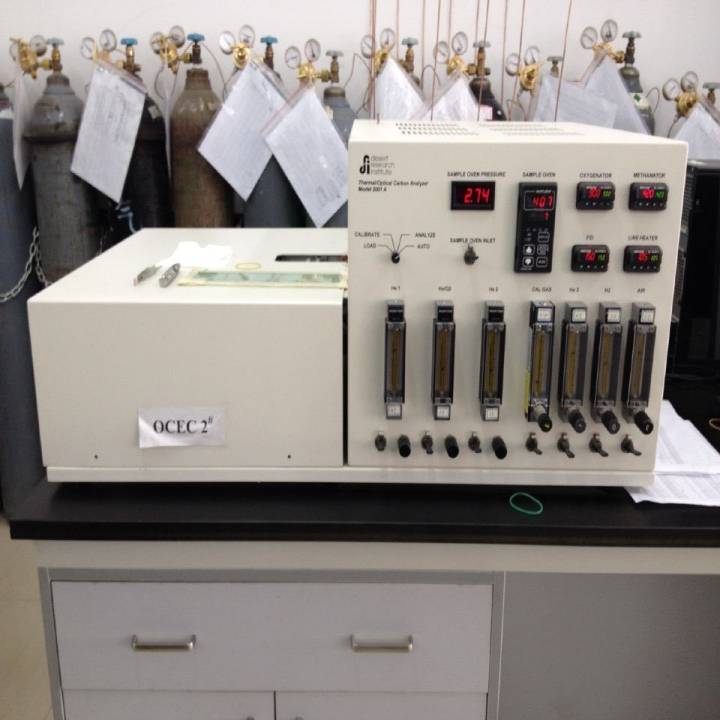Measurement Principle :
The DRI thermal/optical carbon analyzer is based on the preferential oxidation of organic carbon (OC) and elemental carbon (EC) compounds at different temperatures. It relies on the fact that organic compounds can be volatilized from the sample deposit in a helium (He) atmosphere at low temperatures, while elemental carbon is not oxidized and removed.
Typical lower MDL (minimum determine limits, ideal conditions):
-total organic carbon 0.82 µg/ cm
-high-temperature organic carbon 0.81 µg/ cm2
-total elemental carbon 0.19 µg/ cm2
-high-temperature elemental carbon 0.12 µg/ cm2
-total carbon 0.93 µg/ cm2
Electrical requirements:
The analyzer is operated at 115VAC, 60 Hz (or 50Hz on request), at 15 amperes. A transformer capable of delivering 15 amps at 115VAC should be used in areas with different voltage supplies.
Space requirements:
The analyzer should be located in an air-conditioned environment with stable room temperature. Allowing space for the computer system and working space, the equipment will occupy ~ 7 ft. of bench space. Do not locate the equipment in an environment where there is frequent use of acids and organic solvents to avoid contamination and corrosion problems.
Gases:
At least one backup cylinder per gas type should be kept on hand at all times. The calibration gases typically last for one year. The hydrogen, helium, and O2/He mixture are typically replaced every four to six weeks. The compressed air is replaced every 4 to 5 days. All gases are replaced when the cylinder pressure drops below 500 psi.
